New Spirio SW
The new Spirio software for processing data from our broadband antennas brings very well-drawn radargrams that provide an unusual view of surveys to the small depths used in archeology. We are able to distinguish very small changes in the conductivities and permittivities of individual materials and together with the new type of transmitter, which can send up to 3000 pulses per second, we can afford to measure the profile with a step from 2 mm.
Here is a comparison of a radargram that was processed in black and white about 25 years ago and the same radargram processed today by our Spirio software.


Measurements with high resolution and small steps are just waiting for us in the spring, so there are several newly processed older measurements with a step of 5 cm or more.
Mlčechvosty village (CZ), clay, loess and from 2.5 m sand. The first 40 cm depth is completely “erased” by deep plowing. The anomaly could perhaps be a solitary grave, depending on the size and depth …
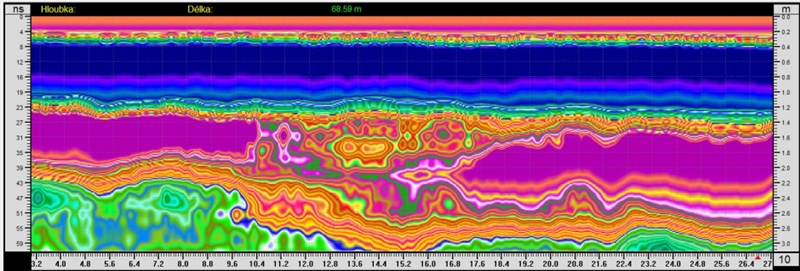
Section of the perimeter wall around the Hradišťany fortified settlement. The lower red-orange layer could have been the original terrain sometime 3,000 years ago. From measurements for archaeologists in Teplice (CZ).

Profile through the square in Teplice. In the left part of the situation under the old paving, on the right from 27 m there is a weighbridge and a new surface.

The square in Teplice again. In the left part are the remains of a recessed fortification in the shape of the letter “V”. Deepening to a depth of 3 m broke the layers retaining surface water. The rampart is already completely covered today and the water still penetrates into the subsoil in this place, it is the red-orange area on the blue background, going to the bottom of the picture.
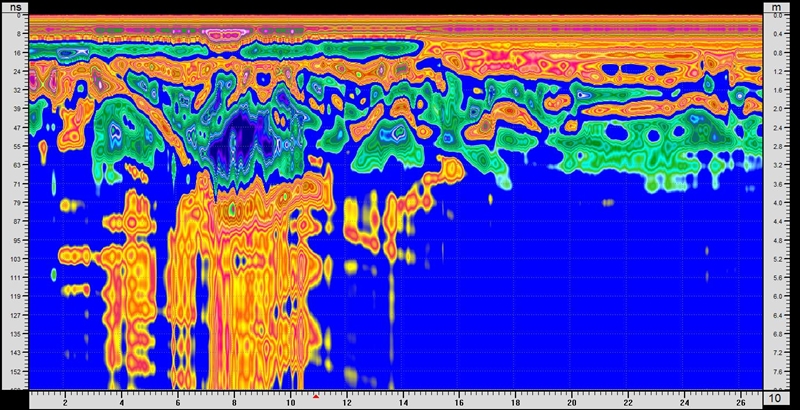
Vysočina, Stříbrné Hory area (CZ). The blue oval at a distance of 31 m at a depth of 8 m is a medieval adit after silver mining.
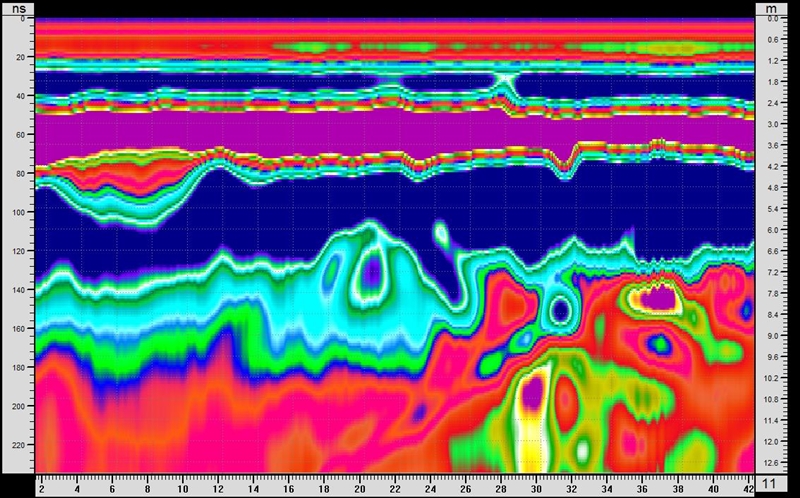
Graves from a survey on Kuks village (CZ).
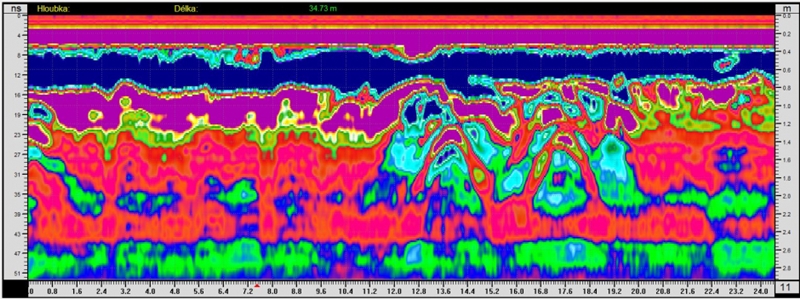
Settlement near Litoměřice city (CZ).
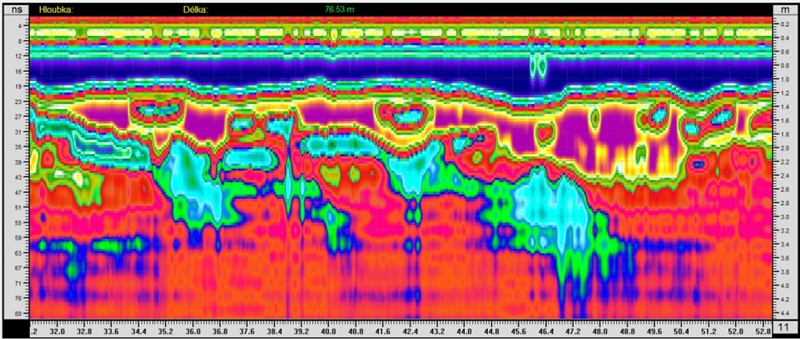
Grave?
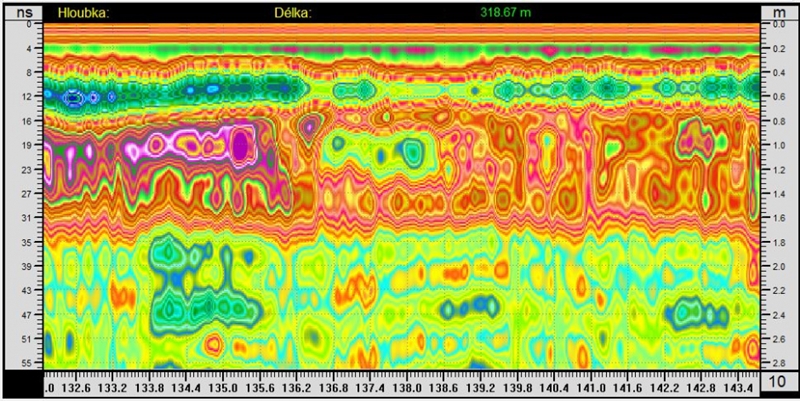
Light blue object – what is it? All layers are broken from above, so maybe an excavation and at the bottom something about size of 60 x 20 cm ….
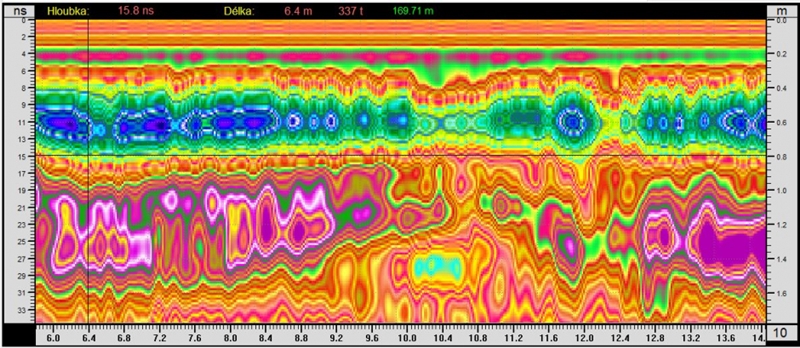 |